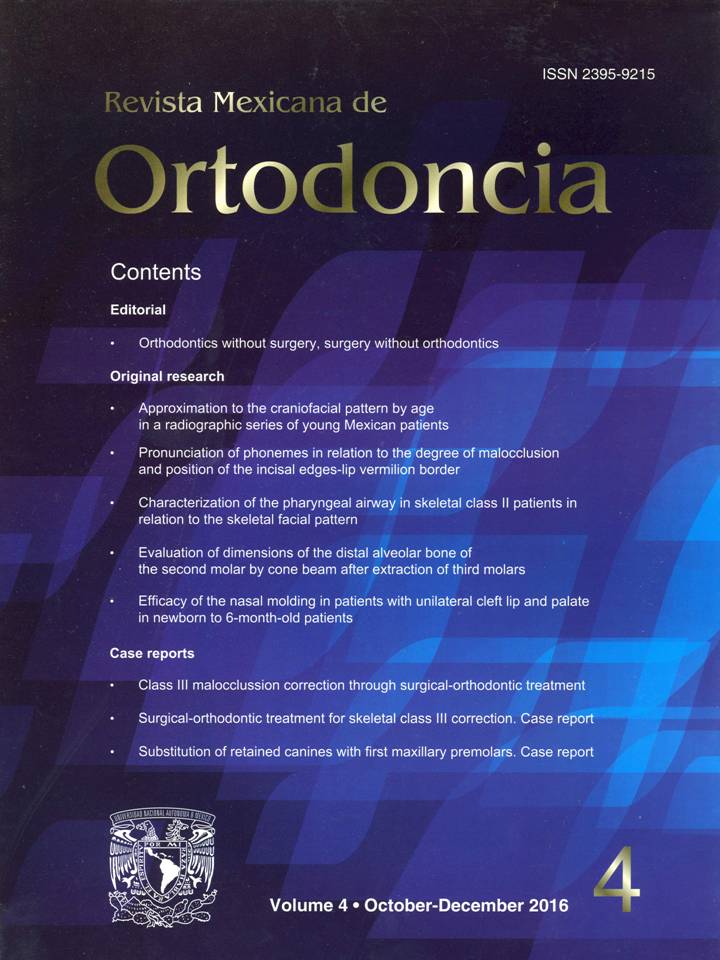Characterization of the pharyngeal airway in skeletal class II patients in relation to the skeletal facial pattern
Contenido principal del artículo
Resumen
The aim of this study was to determine the relationship between different facial biotypes of a skeletal class II population with the area and volume of the pharyngeal airway. Material and methods: The sample was composed by 111 cone-beam CT scans of class II individuals, (women 15 to 40 years and men 18 to 40 years of age). The sample was divided into three groups according to facial biotype: 43 for the brachifacial group, 43 for the dolichofacial groupand 25
for the mesofacial group. In order to determine the airway dimensions the volume and the area were considered. The pharynx was divided in two areas: oropharynx and hypopharynx. Asection was performed through the center of the axial view. This slice was transformed into a sagittal view, where the area was obtained. In this view, the narrowest area was also identified and in the axial view it was contoured to determine the area. To determine the volume the same planeswere obtained. Results: Both the areas as well as
the volumes of the pharyngeal airway of individuals class II showed no significant differences in relation to facial biotype. The narrowest area, which was more frequently found in the oropharynx, did not show signifi cant differences either.
